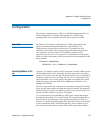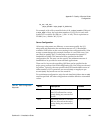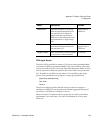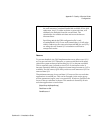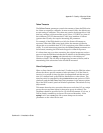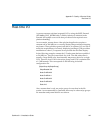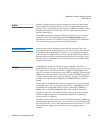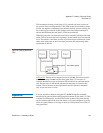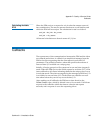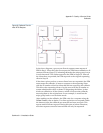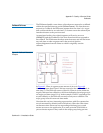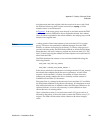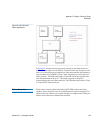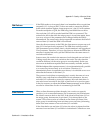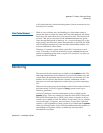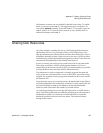
Appendix D Quality of Service Guide
Sharing Disk Resources
StorNext 3.1.3 Installation Guide 152
Performance counters are not enabled by default in the client. To enable
them, you must execute
cvdb -P ; this toggles the state of collection. To
turn off the
perfmon counters, do another cvdb -P. To re-enable, again do
cvdb -P, and so on. To clear all client counters to zero, disable, then re-
enable the counters with
cvdb -P.
Sharing Disk Resources
As a final example, consider the case of a full-featured disk subsystem
(Redundant Array of Very Expensive Disks, or RAVED) using a very
high speed interconnect. Many clients can share these disk arrays, but it is
sometimes desirable to limit a client's access to the array. QOS provides a
mechanism for political bandwidth management so that no one client can
consume all the bandwidth of the channel interconnects.
In such a scenario, the stripe group would always be in real-time mode.
Each client would have a token specifying the number of I/Os/sec
permissible. In the current version of QOS, it is unfortunately not possible
to assign different non-real-time limits to different clients.
The foundation of such an approach is a simple program that puts the
stripe group into real-time mode as soon as the FSM is up and servicing
requests. An example of such a program is included in the source code for
the External API.
Once the stripe group is in real-time mode, the bandwidth as specified in
the FSM configuration file is shared by all clients. In cases such as this, the
real-time limit (
rtios or rtmb) is calculated to be the total bandwidth
desired to each client times the number of possible clients.
As each client attempted to access the disk subsystem, it would obtain a
token. The FSM would send out callbacks adjusting down the amount of
bandwidth available. No one client would be allowed to exceed the
threshold specified in the non-real-time token. This assures fairness
among all the clients.



